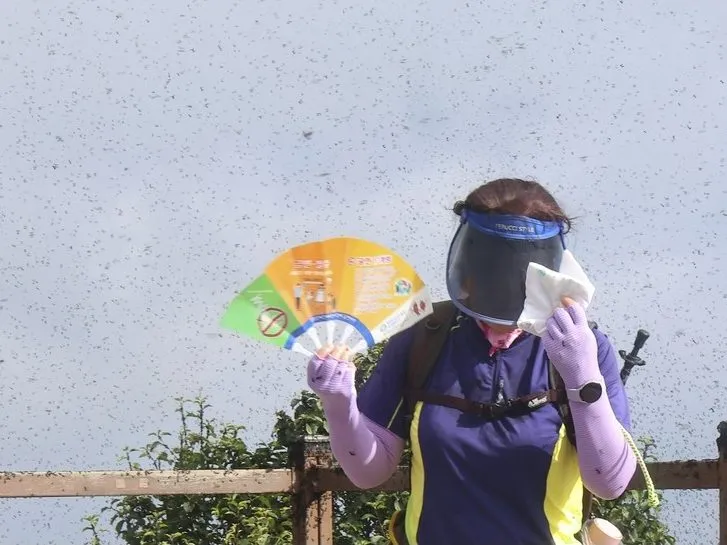By Associated Press
“Compared with the past two years, the number of lovebugs sharply surged last weekend at the mountain,” Gyeyang district official Wang Hyeon-jeong said Tuesday.
Authorities do not know why the mountain has seen more lovebugs than usual this summer, she added.
The 395-metre (1,295-feet) mountain provides the type of hot, humid weather conditions in which lovebugs typically thrive, the Environment Ministry said, possibly leading to the insect population surge.
In Seoul and other areas, it is not yet clear whether there have been more lovebugs than in previous years. The ministry said it will review the seriousness of this year’s case after the insects disappear, likely by mid-July.
South Korean officials view lovebugs as beneficial insects, saying they help pollinate flowers as their larvae convert plant materials into organic components. Officials are avoiding chemical pesticides by using sticky pads and spraying water to cope with the large insect population.
Many experts say the flow of lovebugs to South Korea, likely from China, is associated with the country’s warming temperature and is linked to climate change.
